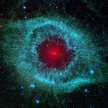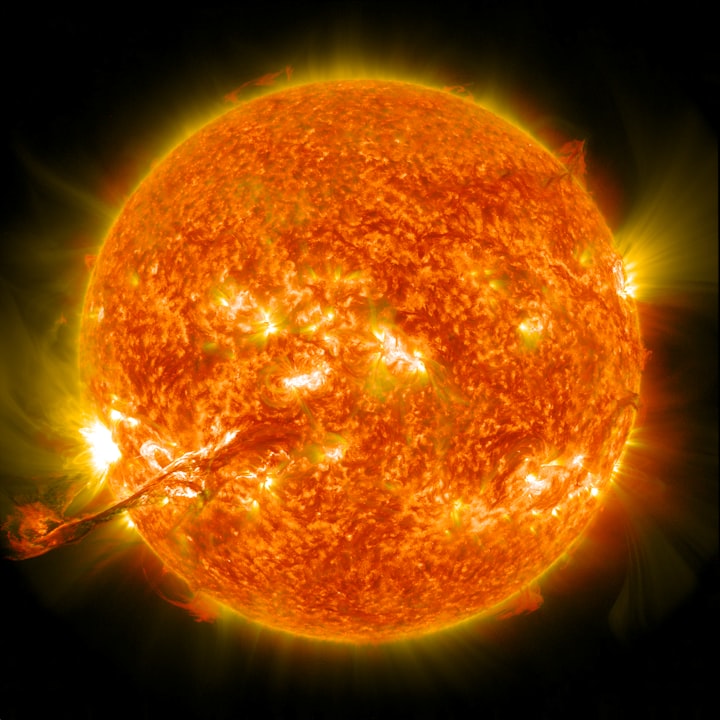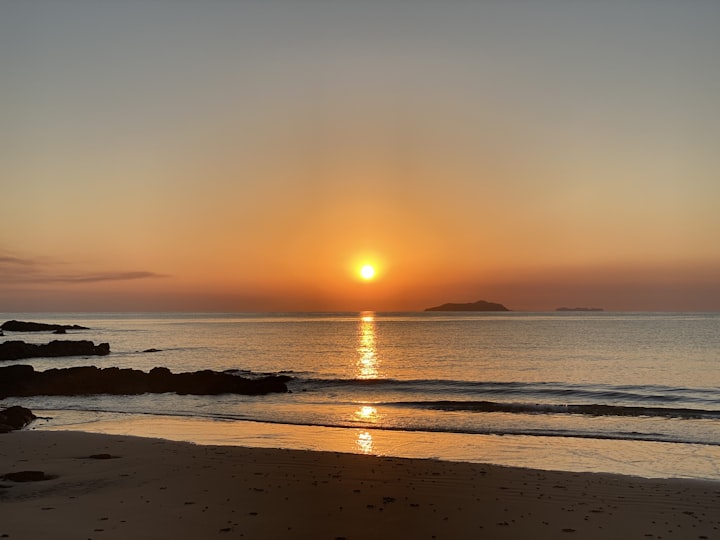Our Life-Giving Star, the Sun
Without the sun's light and heat, there would be no life on earth.
British spelling.
<><><>
Our magical star.
The nuclear fusion reactions in the sun's core fuse 600 million tons of hydrogen into 596 million tons of helium every second.
The missing 4 million tons of matter is converted into pure energy, some of that energy is responsible for the light and heat we see and feel on the Earth.
Our middle-aged Sun has ample fuel left and will continue to burn hydrogen for an estimated 5 billion years or more.
The sun loses mass in two ways, solar wind carries 1.5 million tons away from its surface every second.
The sun also loses 4 million tons of mass per second by nuclear fusion reactions in its core.
This is another way of describing how much mass the Sun is losing; the Sun loses the equivalent of one Earth mass every 100 million years.
Since the sun's birth, it has lost roughly 45 Earth masses, due to the solar wind and nuclear fusion. It may seem like a large amount of mass, but the sun has a mass 333,000 times that of the Earth.
The sun accounts for 99.86% of the total mass in the solar system.
Two forces keep the sun in a stable condition, one being the fusing of hydrogen to helium, creating the force pushing outwards from the core, and the other being gravity, which is pulling inwards.
This stability will last for a very long time to come.
The sun has a diameter of 1.39 million kilometres and a core temperature of over 15 million degrees Celsius. It mainly consists of 70% hydrogen and 28% helium; the remainder of the total mass is carbon, nitrogen, oxygen, and a few other elements.
In its lifetime, the sun will fuse heavier elements, from helium right up the periodic table to carbon and oxygen. Larger-mass stars can fuse heavier elements, which will end with iron.
The Sun is so big that 1.3 million Earths would be needed to make up its volume.
Heavier elements than iron are created in supernova explosions when large stars come to the end of their lives.

Photo by aisvri on Unsplash.
The distance between the Earth and the Sun is approximately 149.6 million kilometres, or one astronomical unit.
To put that distance into perspective, light leaving the sun is travelling at 1,080 million kilometres per hour and takes just over 8 minutes to reach our planet.
We can thank the sun for our existence but our lifespan as a species is very short
It is estimated that 117 billion humans have existed since we arose.

Photo by Aron Visuals on Unsplash.
Roughly 8 billion humans are alive today, and the universe is estimated to be 13.8 billion years old.
The universe is ancient. Therefore, to make the length of our time here on Earth more understandable, we can do this.
If we condense 13.8 billion years into one Earth year and call it the cosmic calendar, one day would equate to 37,800,000 years, and one hour would be 1,575,000 years.
In the cosmic calendar, time and space started on the first second of the first day of January.
At the beginning of September, our planet Earth was forming.
It was September 21st before the first primitive life appeared on our planet. That first life was a prokaryote, a single-celled organism.
Now life could start on its long evolutionary path.
On the 29th of December on our cosmic calendar, a large asteroid smashed into the earth, and that natural disaster wiped out 75% of the world's plant and animal species.

Image by MasterTux from Pixabay.
That asteroid that devastated most of the life on Earth is estimated to have been over 10 kilometres wide. The impact site was centred on what is now the Yucatan Peninsula, Mexico, and left a crater 150 kilometres across.
Back to the cosmic calendar: about 3 minutes before midnight on the 31st of December, homo sapiens appeared.
Yes, our time here as a species is minuscule compared to the universe's age.
Anatomically modern human remains have been discovered dating back 300,000 years.
The end.
<><><>
You may find my easy-to-understand stories about the universe and life interesting and educational.
Subscribe to me for free, and you will see my latest stories. Enjoy.
About the Creator
A B Forbes
Someone with a lifelong passion for that gargantuan area we call the universe. I also write stories about life itself. Enjoy







Comments
There are no comments for this story
Be the first to respond and start the conversation.